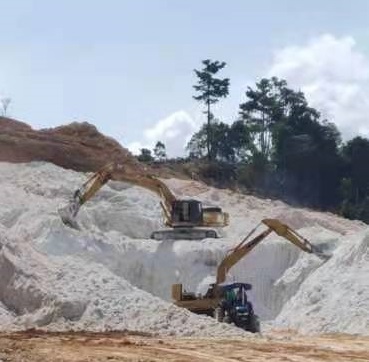
The word kaolin is derived from the name of the Chinese town Kao-Ling (or Gaoling, “high ridge”), located in the Jiangxi Province of southeast China, where the written description of porcelain can be found. The word kaolin is now used as a loose trade and geologic term to refer to white clayey rock that is predominantly composed of Kaolin Group (khandite) minerals.
The most common constituent is the mineral kaolinite. Kaolinite is a layered silocate made of alternating sheets of octahedrally coordinated aluminum and tetrahedrally coordinated silicon that are bonded by hydroxyl groups. Kaolinite is represented by the chemical formula Al2Si2O5(OH)4, and it most often occurs as clay-sized, platelike, hexagonally shaped crystals.



